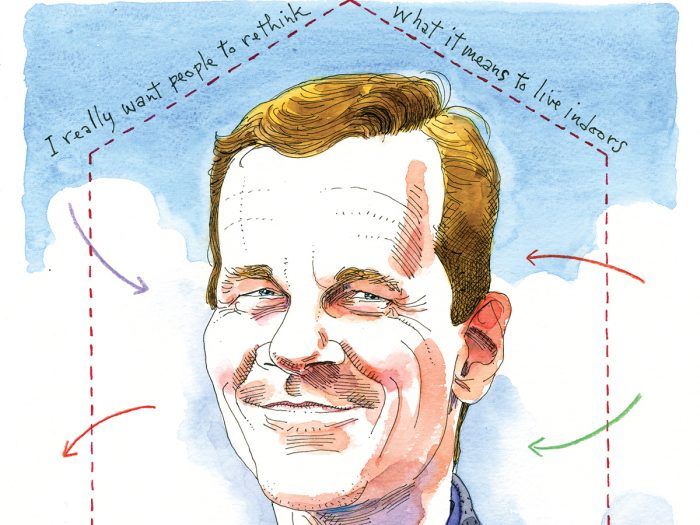The Fine Homebuilding Interview: Kristof Irwin
A professional engineer offers a consilient view of building science that prioritizes human thriving.

Synopsis: In the fourth installment of the Fine Homebuilding interview series, Aaron Fagan interviews Kristof Irwin, an engineer who wants us all to rethink what it means to live indoors. By focusing on human thriving, Irwin says, and viewing our indoor environment as greatly involving human health, we can cultivate a new relationship with our homes and all that they embody.
A principal of Positive Energy in Austin, Texas, professional engineer Kristof Irwin has an expanded view of building science. He asserts that any definition of the discipline is incomplete without accounting not only for the house as a system, but also for the fact that a home operates as a node in a larger societal and planetary system.
“The paradigm needs to change,” Irwin said during our interview. “Fundamentally, homes should be about human thriving.” And he believes this is an attainable goal—one that isn’t reliant on unrealized technologies of the future. The building industry needs to undergo a cultural shift, he says, and all of us need to cultivate a new relationship to our homes and all that they embody.
According to Irwin, we have the tools we need already to create long-lasting, healthy homes. He asks us to consider this question: Is it time to stop focusing on doing things better and start focusing on doing better things?
AF: How would you describe the focus of your building-science practice and work as an engineer from a cultural point of view?
KI: I really want people to rethink what it means to live indoors. We view an indoor environment as though it’s merely visual, spatial, and economic. When I say we, I mean those within the architecture, engineering, and construction professions. As a result, homeowners and developers are complicit in that view. However, from a very pragmatic standpoint, when we talk about actually being in your home, what we really mean is you are in the air contained by your home, and that means being in a highly immersive tactile situation where visual, spatial, and economic concerns must be secondary to human health.
For example, phthalates are a class of chemical plasticizers used in myriad building products. Even if you put indoor breathing aside, we can still get a substantial transdermal uptake of these chemicals, which are now being linked to a wide variety of health concerns.
That is one of many facts we are going to have to confront in the building industry regarding the health of our built environments. The paradigm needs to change. Fundamentally, homes should be about human thriving. We cannot put the very systems upon which we provide energy and resources for our homes, which are in natural ecosystems, out of that view. In thermodynamics, for example, you define a boundary, and what we tend to do is define the boundary around the home or the lot. That myopia is inappropriate and damaging.
I’ve been rethinking what it means to practice building science, which has been conventionally described as systems theory applied to buildings based on the physical sciences. That last piece is very important; typically, it’s the classic sciences like thermodynamics, hygrothermal dynamics, or, more broadly, physics, chemistry, biology, geology, and engineering disciplines. However, what’s critical to systems thinking is accurate timely feedback. That principle is huge for the role Fine Homebuilding plays in the culture of home building. One of the most crucial developments for the steam engine was the centrifugal governor. It provided accurate timely feedback of the pressure buildup, which turned it from a grenade to an engine. Culture change is complicated because the very systems we rely on for accurate timely feedback to our society are working through implicit biases.
Where building science is concerned, the elephant in the room, the “emperor has no clothes” reality, is that there are essentially no compelling constraints to keep us from making fantastic buildings. And I mean multiple simultaneous dimensions of quality. These buildings could last 500 years, they could provide flawless air quality, and they could help improve sleep, life expectancy, cognition, and emotional regulation. We know how to design environments to promote human thriving, but we don’t do it.

From Fine Homebuilding #300
To read the entire article, please click the View PDF button below.
RELATED LINKS
Fine Homebuilding Recommended Products
Fine Homebuilding receives a commission for items purchased through links on this site, including Amazon Associates and other affiliate advertising programs.

All New Kitchen Ideas that Work

The New Carbon Architecture: Building to Cool the Climate

All New Bathroom Ideas that Work


























